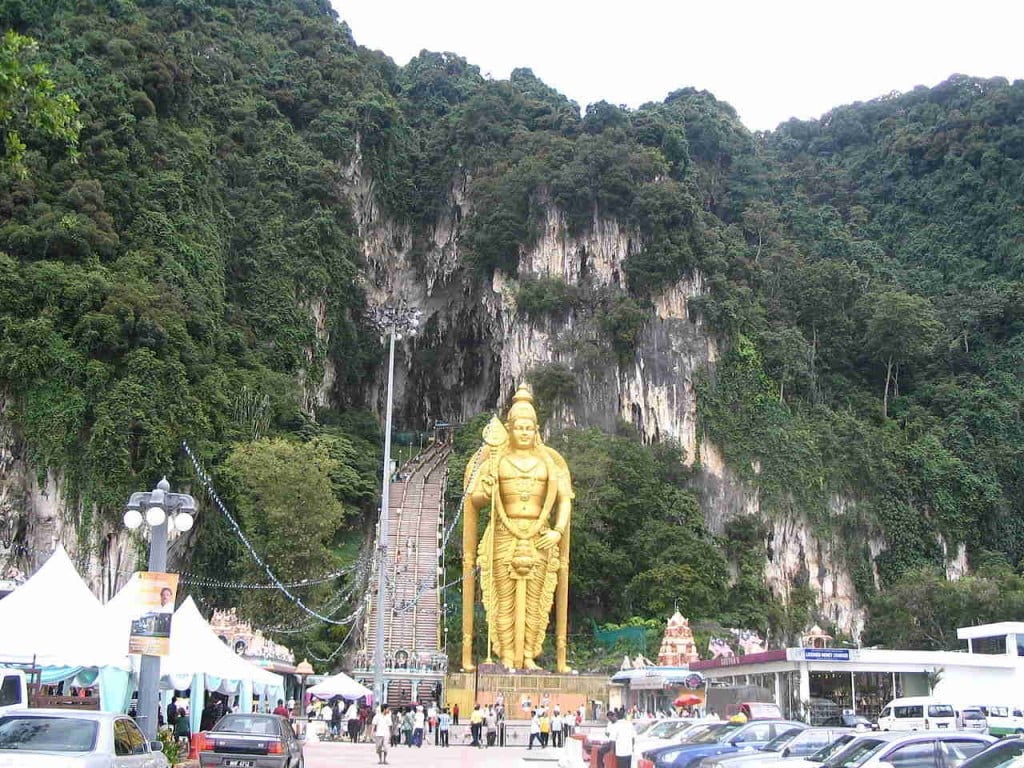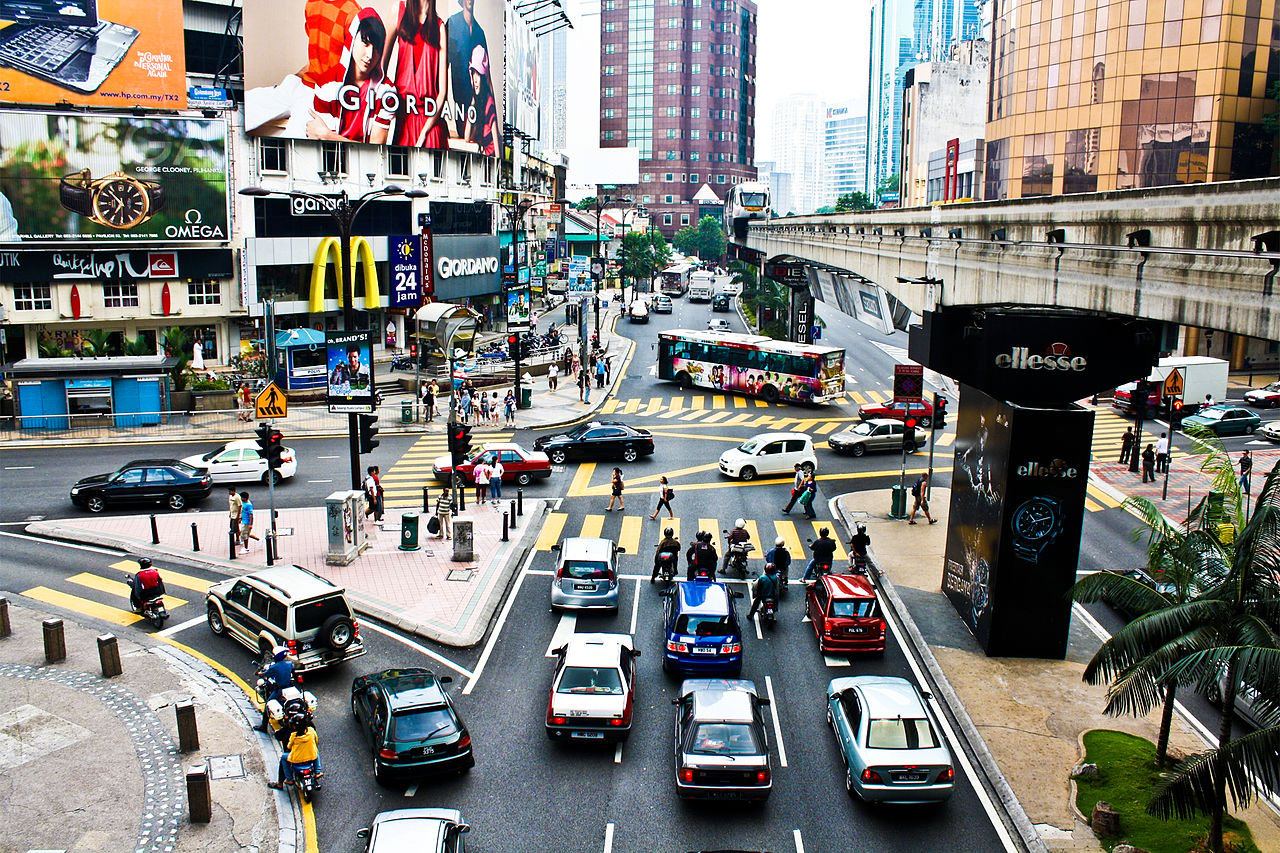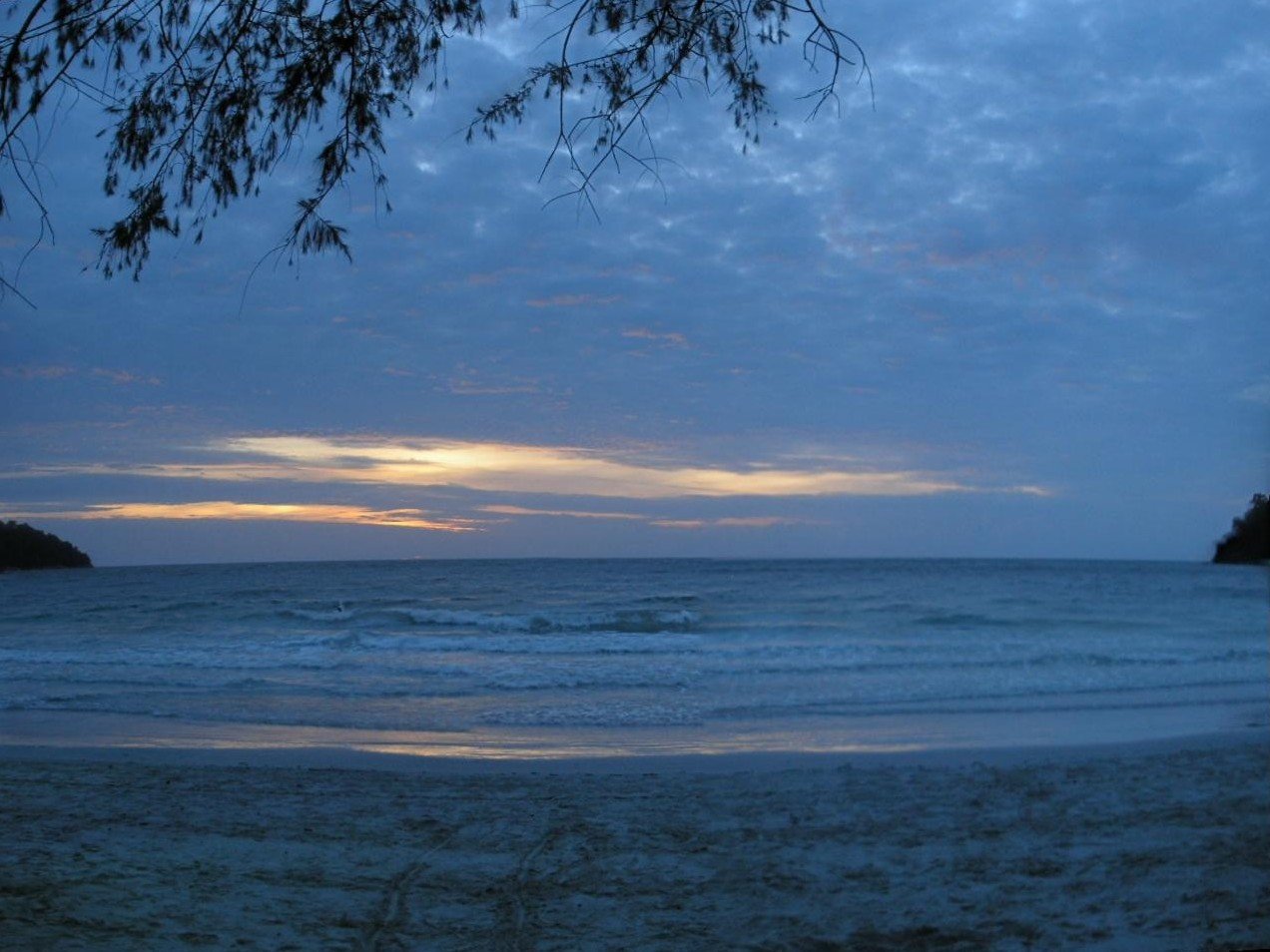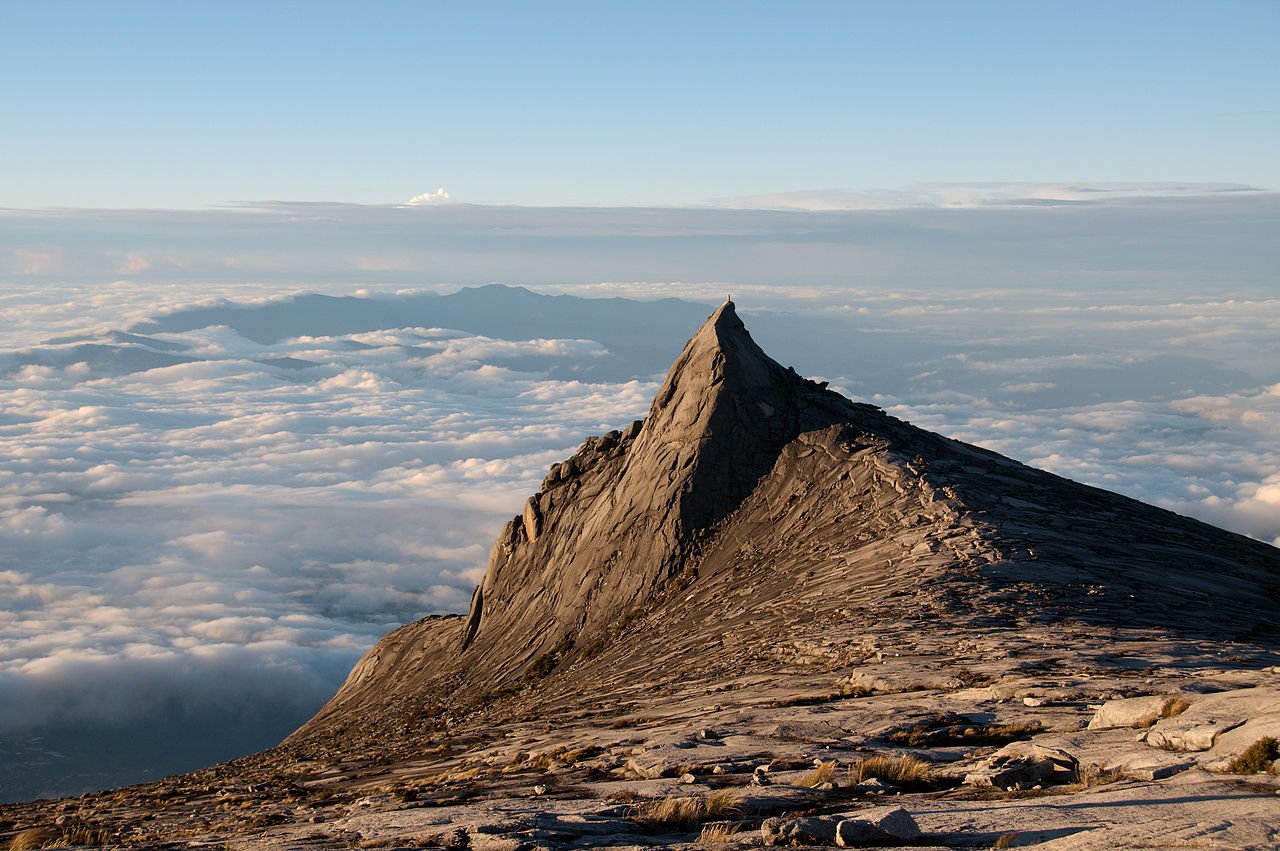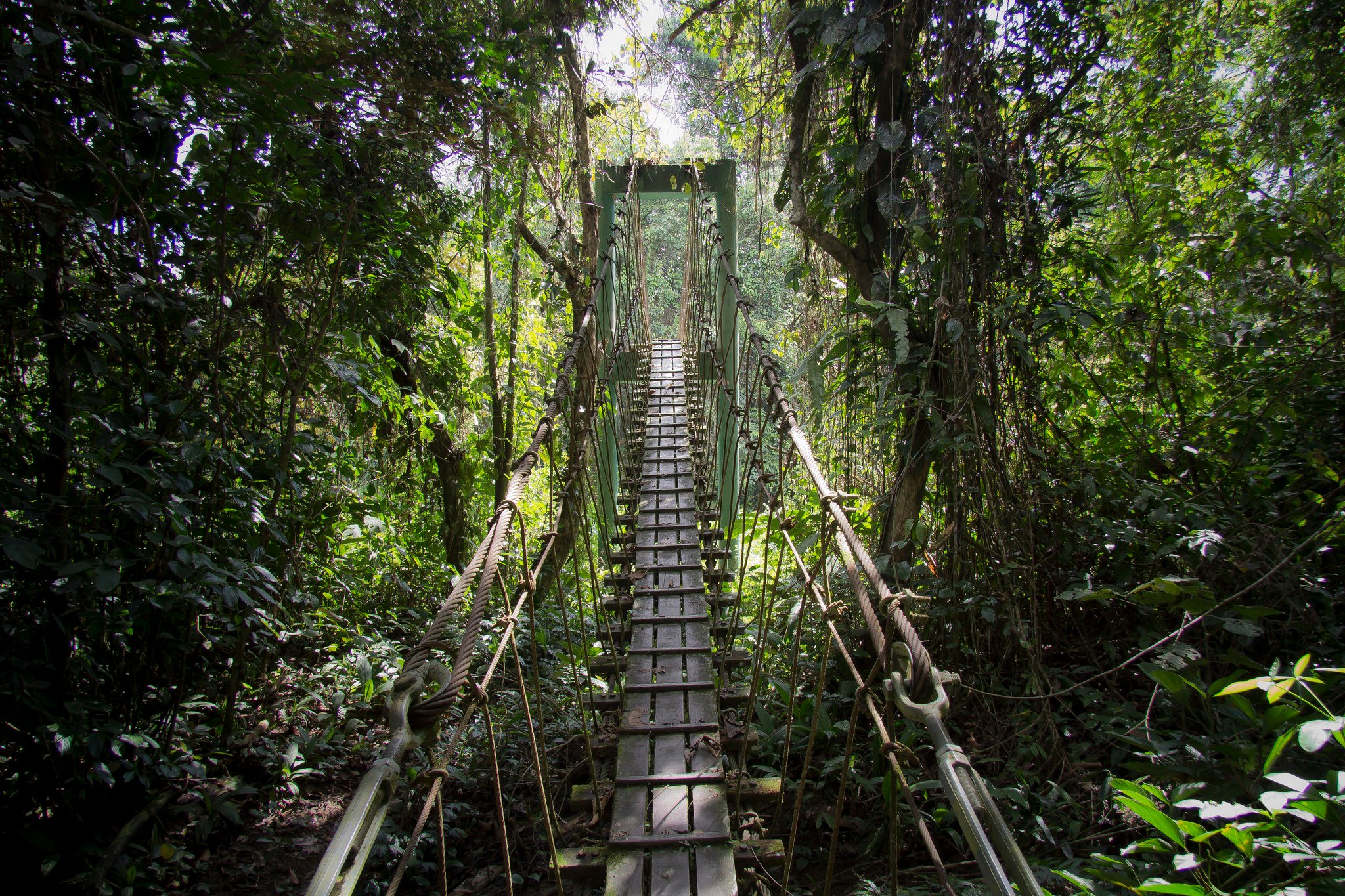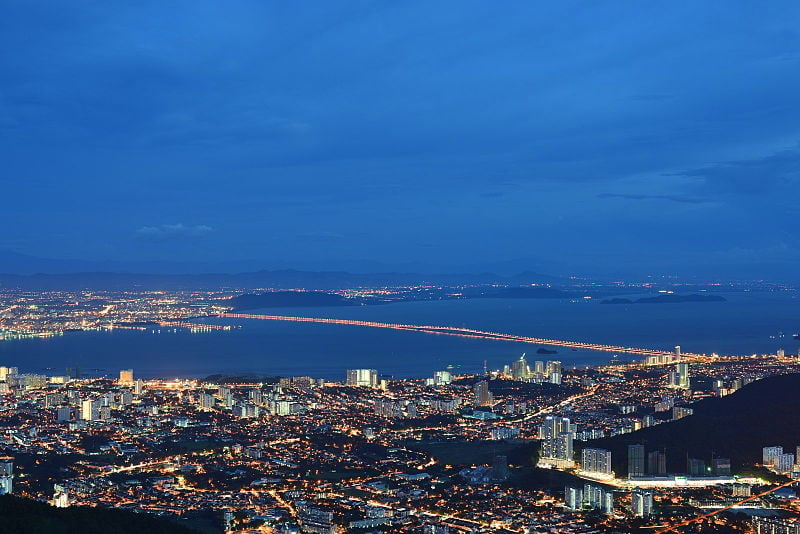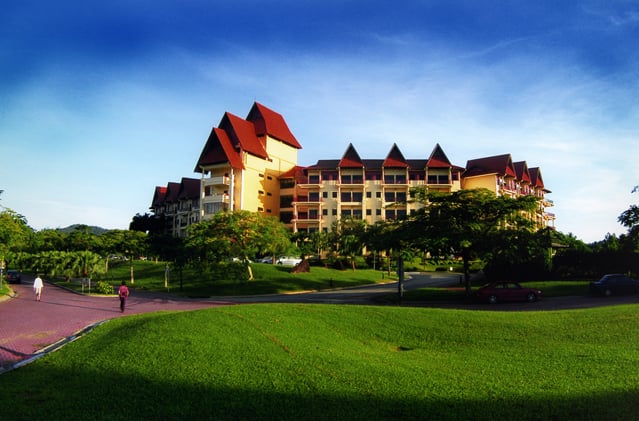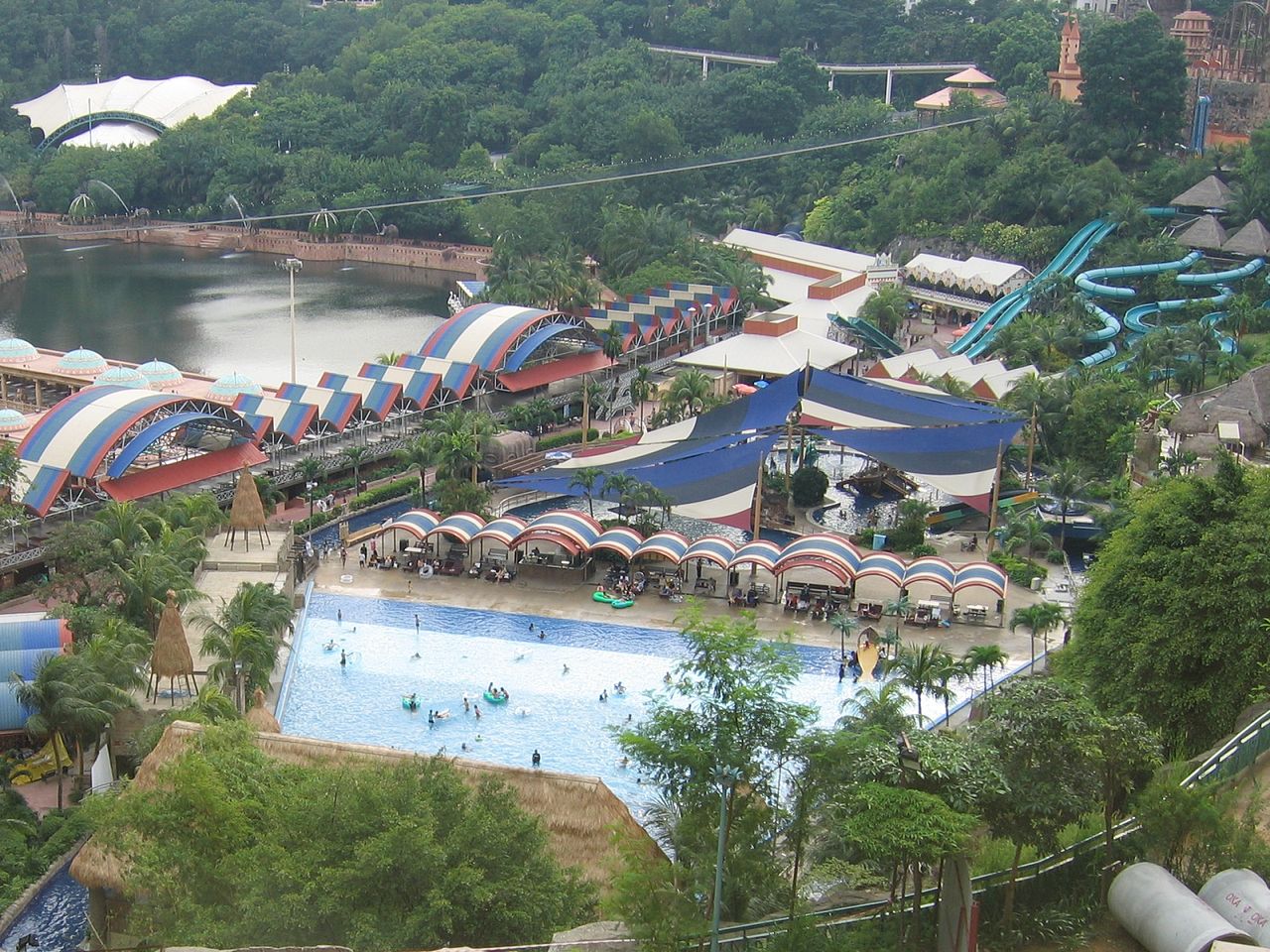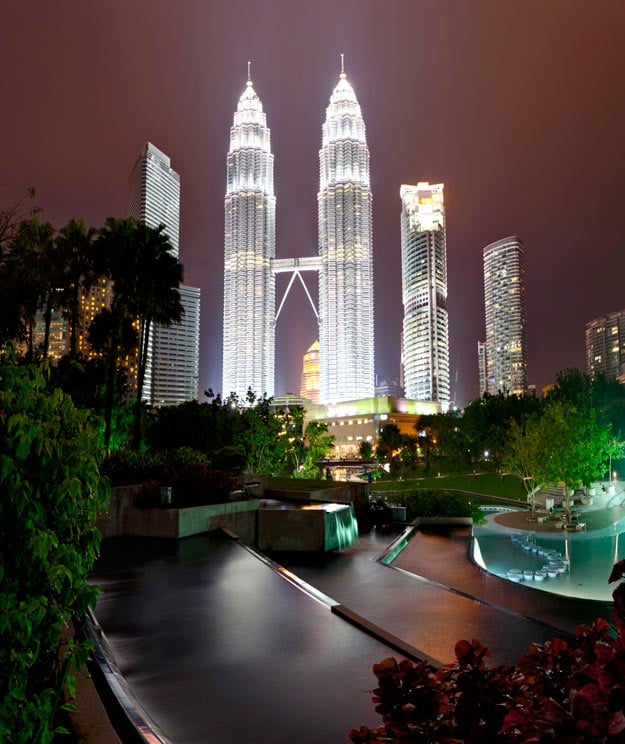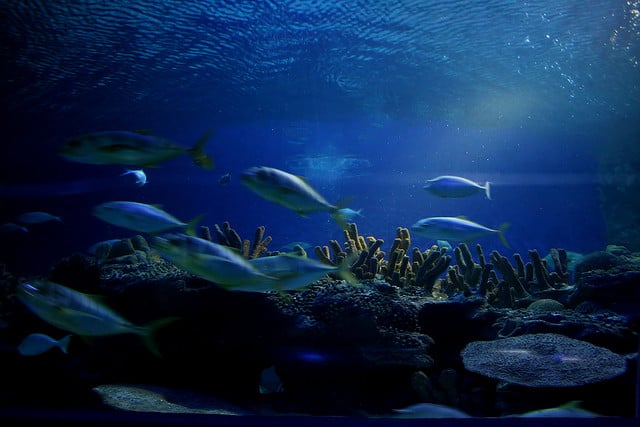A scenic 30-minute drive from the heart of Kuala Lumpur takes you to a Hindu shrine in an enormous limestone outcrop called Batu Caves. This hill – riddled with cave patterns and inundated with monkeys – is a tailor-made place to gain insight into Malaysia’s deep and diverse religious roots. To put cherry on top, the labyrinth of spooky caverns is a haven for natural rock climbing experiences.
History
The caves are about 400 million years old and their entrances were used as shelters by the indigenous Temuan/Besisi people. An American naturalist, William Hornaday, surveyed the limestone hills in 1878. Later in 1890, an Indian trader, K. Thamboosamy Pillai, placed a statue of Sri Murugan Swami and promoted the caves as a place of worship.
Things to Do in Batu Caves
Caving – The temple complex consists of three main caves and a few relatively smaller ones. The Temple Cave or Cathedral Cave – which is the biggest of all – shelters several ornate Hindu shrines beneath its 100-m-high arched ceiling.
At the base of the hill, two more cave temples – Art Gallery Cave and Museum Cave – also feature Hindu statues and paintings.
Another sacred site, the Ramayana Cave, depicts the story of Lord Rama in a chronicled manner along its rugged walls. Just outside, there a temple dedicated to Hindu deity Hanuman greets the worshipers. The Dark Cave, which is a long network of pristine caverns, is a protected area.
Rock Climbing – With more than 160 climbing routes – on the limestone hills rising up to 150 meters – the region is popular for rock climbing in Malaysia. The routes often start from northeastern side of the Damai caves. While the Nyamuk Wall is renowned as the hardest and longest route in the region, first-timers should go for climbing on Damai Wall, Comic Wall, and Nanyang Wall. Take a three to four-hour- long adventure tour which involves getting wet, scaling rock faces, and squeezing past narrow potholes.
Festival – The caves serve as the focal point of the annual Hindu festival of Thaipusam. Celebrated here since 1892 in the Tamil month of Thai – which falls in late January or early February – it symbolizes the triumph of good over evil. Thousands of devotees carry their offerings, mostly containers of milk, to the Lord Murugan on meticulously decorated ‘kavadis’ (offering carried by a devotee).
Flora and Fauna – Blanketed with a green canopy, the region is home to troupes of long-tailed macaque monkeys fed by visitors — at times even involuntarily. Other animal species here are elephants, beetles, birds, spiders, and cave-dwelling bats.
Nearby Attractions
Aquaria KLCC, Petronas Twin Towers, Kuala Lumpur Bird Park, Merdeka Square, and Suria KLCC.
Location
Batu Caves are situated around eight miles (13 km) north of the capital city Kuala Lumpur in Gombak district in Selangor, Malaysia.
Map of Batu Caves, Malaysia
How to Reach?
By Air – Kuala Lumpur International Airport (KUL) is the nearest major airport from the caves. It is well-connected by flights from cities in Southeast Asia and rest of the world.
By Train – Batu Caves Komuter station is easily accessible from KL Sentral via KTM Komuter passenger network.
By Road – The site may also be reached by public transportation: Bus 11/11d from Bangkok Bank Terminus or bus U6 from Titiwangsa.
Best Time to Visit
June through August is the ideal time to visit Kuala Lumpur. If you’re not particularly fond of crowd, then plan a visit in the low seasons of February to March and September to early November.
Facts about Batu Caves
- The caves are aptly named after the Sungai Batu (Batu River) which flows nearby.
- Sri Mahamariamman Temple is the oldest functioning Hindu temple – also among the richest – in Malaysia.
- There are 272 concrete steps to the Temple Cave.
- The 42.7-m-high golden statue of Lord Murugan is the tallest in the world.
Accommodations
Budget travelers should check out Serenity Hostels, Back Home, and Sunshine Bedz. For mid-range accommodations, Gombak Star Hotel, Hotel Sahara, KIP Hotel, and Smile Hotel Selayang Point are good options. For those looking to splurge, Grand Millennium Kuala Lumpur, Traders Hotel, Hotel Maya, and Fraser Residence are recommended hotels in Kuala Lumpur.
Restaurants
Being a site heavily influenced with Indian culture, you can taste a tasty Indian curry complemented with rice and papadum served on a banana leaf. Take a break from vegetarian cuisine and head to downtown Kuala Lumpur that features wide selection of European and Pan-Asian cuisine in fine-dining restaurants and posh restobars. Nasi lemak, Bak-kut-teh, and Char Kuey Teow are tantalizing traditional delicacies to try. Relish the panoramic views from floor-to-ceiling windows in Marini’s on 57 Restaurant or savor the Indochinese meals in Madam Kwan’s.
Things to Remember
- Visiting hours for the caves are 6 AM to 7 PM which vary with weather conditions.
- While the entry to most temples is free, each cave has a different admission price.
- An audio tour is available to visitors.
- The Malaysian Nature Society organizes regular educational trips to the Dark Cave.
- Since it’s a religious site, visitors should dress modestly.
- Abseiling and spelunking trips can be organized with local adventure companies.
